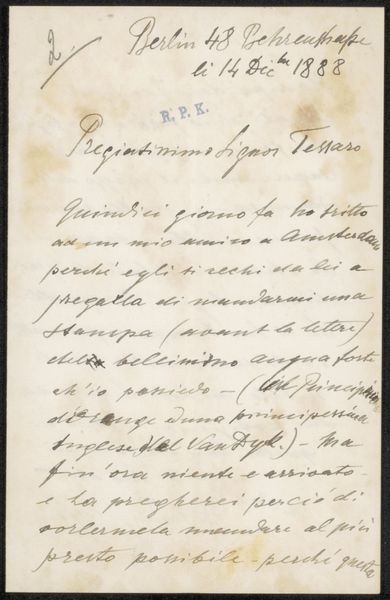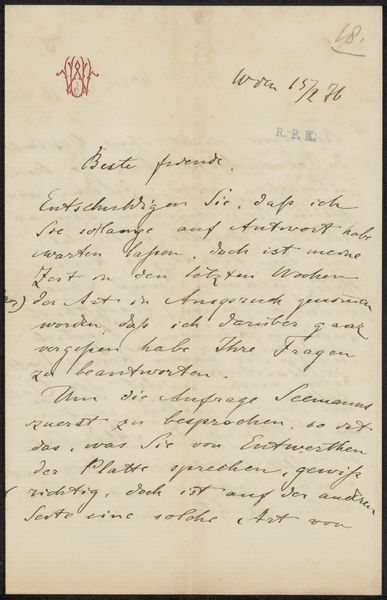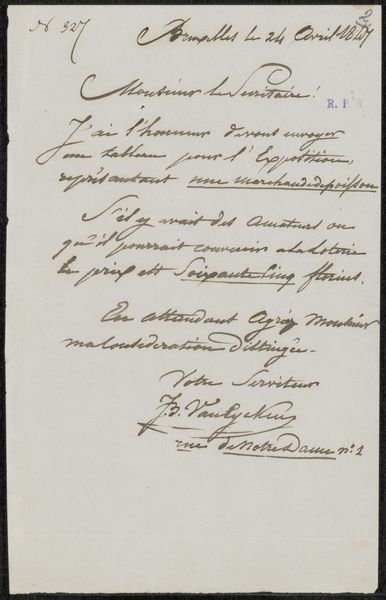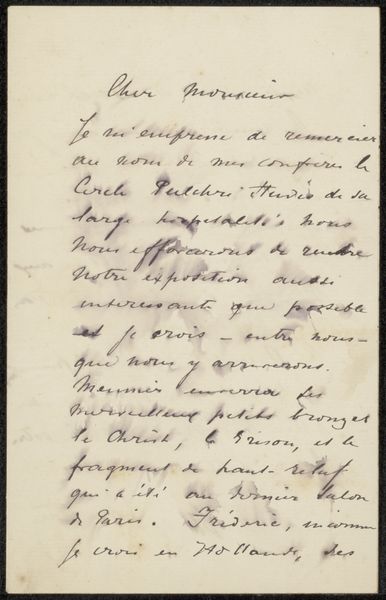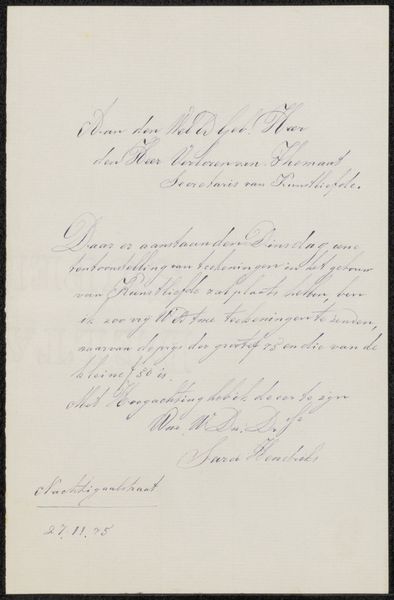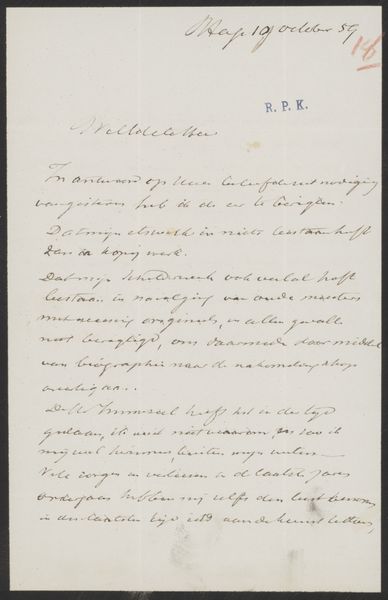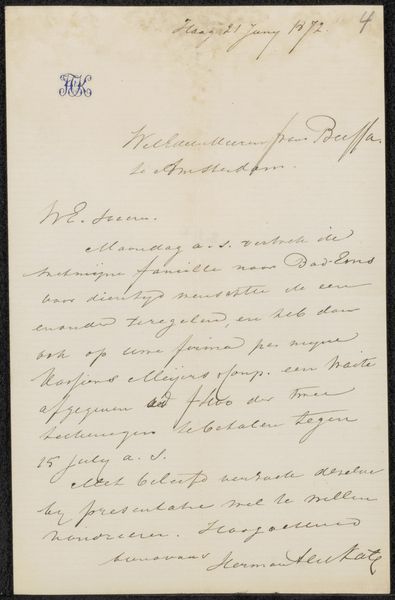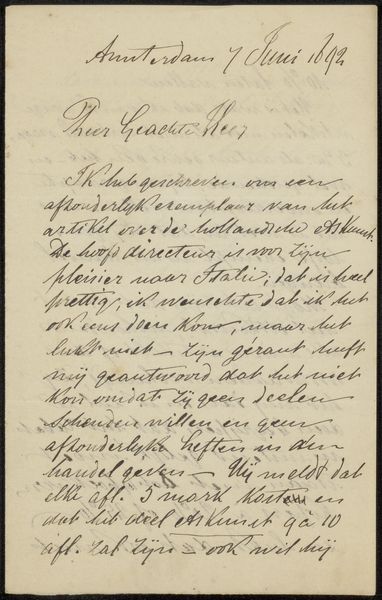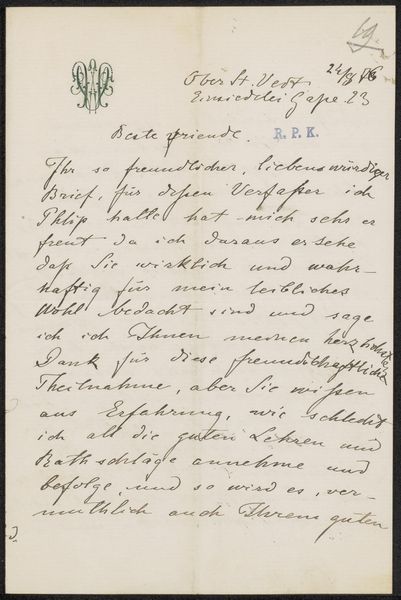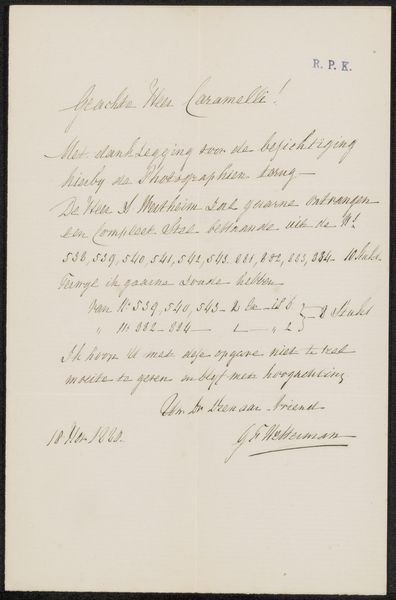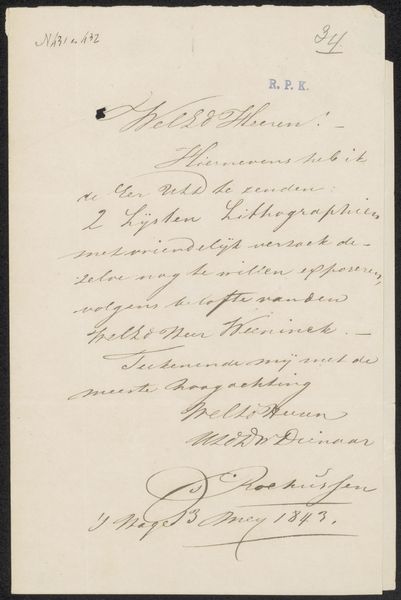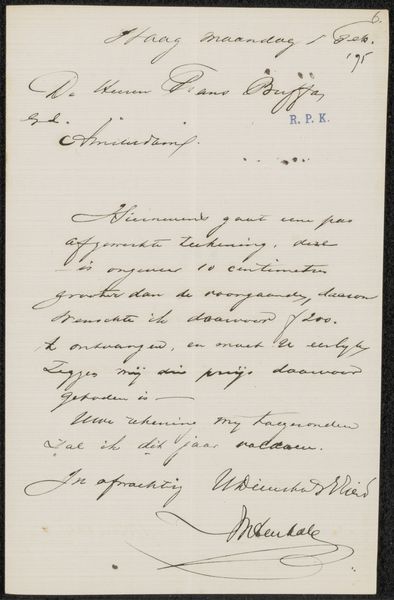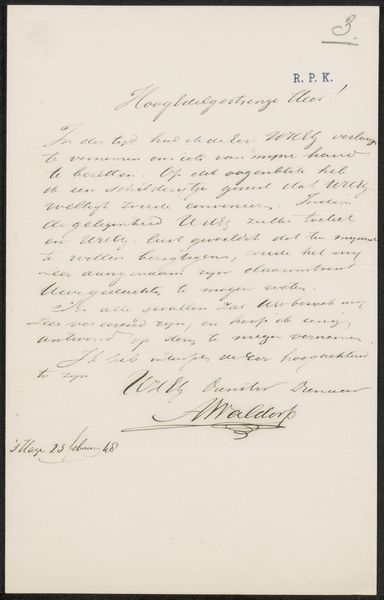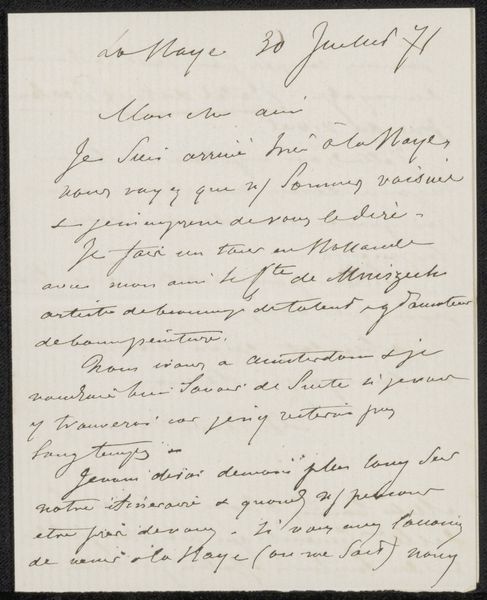
drawing, paper, ink, pen
#
portrait
#
drawing
#
paper
#
ink
#
intimism
#
romanticism
#
calligraphic
#
pen
#
calligraphy
Copyright: Rijks Museum: Open Domain
Editor: This piece, titled "Brief aan onbekend" – or "Letter to an Unknown" – is by G. Pingre, created sometime between 1800 and 1856. It's ink on paper, a handwritten letter. The delicate script gives it an air of intimacy and bygone eras. What strikes you most when you look at it? Curator: Immediately, the calligraphic quality of the writing commands attention. Observe how the ascenders and descenders of the letters create a dynamic rhythm across the page. The consistent pressure and elegant flourishes speak to a highly trained hand. Notice also the carefully considered placement of text blocks in relation to the paper's edges; it structures our reading of it. Does the layout or use of negative space offer insights, do you think? Editor: It does feel balanced, but not rigidly so. Almost conversational, mirroring the letter's function. What do you make of the ink itself? It’s a consistent tone; it almost looks sepia. Curator: Precisely. The monochrome ink, a deliberate artistic choice or a result of natural aging, unifies the visual field. This consistency emphasizes form and structure. The variation in line thickness adds depth despite the limited tonal range. This directs our vision; note how heavier strokes provide weight. The penmanship certainly feels as important as the words being communicated. Editor: So, the visual construction and the intentional use of the writing materials communicate just as much as the literal message. I never thought to consider calligraphy as being that visually significant on its own. Curator: Indeed. Deconstructing art helps reveal elements of the artist’s craft. Close analysis lets you “read” beyond surface comprehension and find nuance. Editor: This has changed my whole perspective! Thank you for such precise, insightful feedback.
Comments
No comments
Be the first to comment and join the conversation on the ultimate creative platform.
